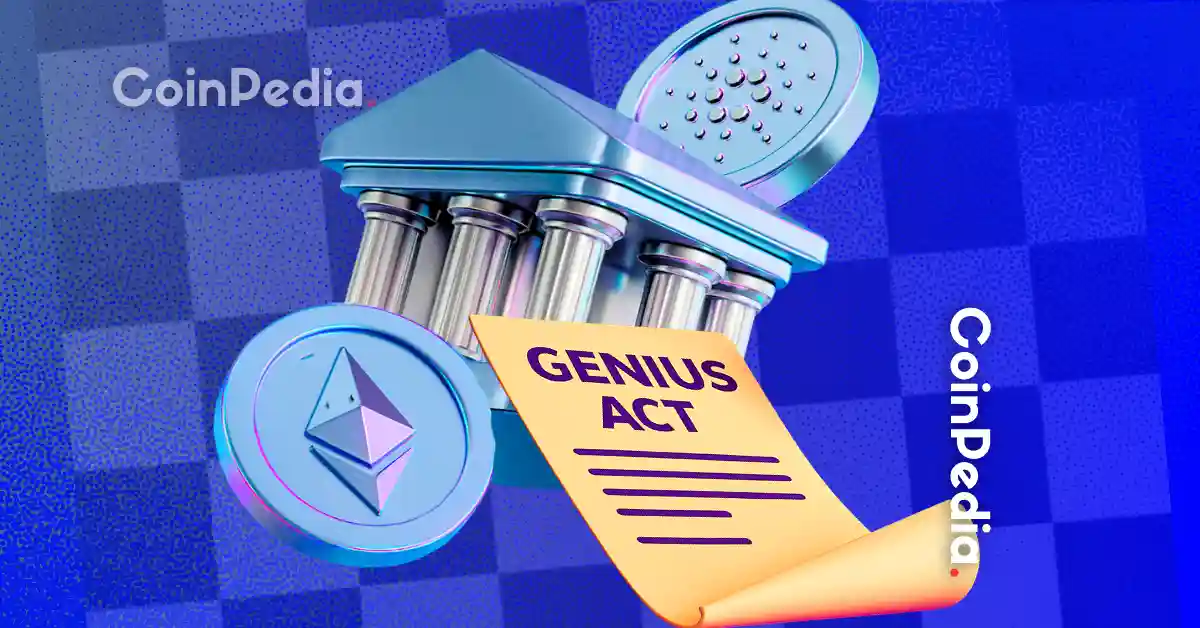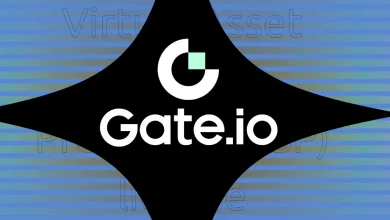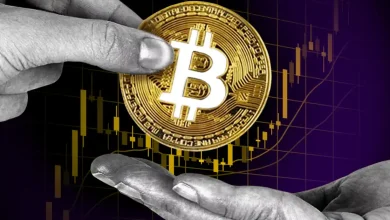
Bankers urge Congress to close GENIUS Act gap that could let stablecoins lure deposits away from banks.
Loophole may fuel $2T stablecoin market growth, raising risks to credit and financial stability.
A coalition of major U.S. banking groups, led by the Bank Policy Institute (BPI), is urging Congress to act fast on a “dangerous gap” in the GENIUS Act. This gap could let stablecoin issuers sidestep the law by offering interest through affiliated platforms, including crypto exchanges, a move bankers warn could shake the very foundations of the financial system.
$6.6 Trillion at Risk
In a strongly worded letter to Congress, also signed by the American Bankers Association, Consumer Bankers Association, Independent Community Bankers of America, and the Financial Services Forum, the groups warned of a potential $6.6 trillion deposit flight from banks.
This, they argued, would choke credit availability, hike interest rates, and make loans harder to get for American households and businesses. The warning echoes an April U.S. Treasury report, which flagged similar risks.
Why Banks Are Worried
Banks use deposits to fund loans for people and businesses. If too much money flows into stablecoins, borrowing could become more expensive, and loans could become harder to get.
Some stablecoins already offer ways to earn without breaking the current rules. For example, holding Circle’s USDC on Coinbase or Kraken can earn rewards, even though the issuer itself isn’t paying interest.
Why Stablecoins Are Different
BPI underscored that stablecoins are not the same as bank deposits or money market funds. Banks use deposits to fund loans and invest in securities, fueling economic growth. Stablecoins, on the other hand, simply maintain their peg without contributing to credit creation. Allowing them to offer yield, bankers say, would be unfair competition and could lure deposits away from the banking sector.
Stablecoins now represent a $280.2 billion market, with Tether and USDC controlling over 80% of that value. The Treasury expects the market could grow to $2 trillion by 2028, making regulatory clarity increasingly urgent.
Crypto companies, however, are resisting changes. Coinbase CEO Brian Armstrong emphasized during an earnings call that rewards on USDC holdings are not “interest” but “rewards,” arguing the ban does not apply to them. Similarly, PayPal has signaled plans to continue its stablecoin incentive programs despite the legislation.
The GENIUS Act’s Gray Zone
Signed into law on July 18, the GENIUS Act bans stablecoin issuers from directly paying interest. Yet the law does not explicitly extend this restriction to affiliate businesses. This, bankers fear, could become a backdoor for yield-bearing stablecoins to take off, undermining the banking sector’s deposit base and shaking credit markets during economic stress.
Dollar Dominance vs. Financial Risk
While bankers push for tighter rules, crypto analysts argue that the GENIUS Act could boost U.S. dollar dominance. By promoting dollar-backed stablecoins, the law could strengthen the greenback’s global reserve status. But for now, the tug-of-war between innovation and financial stability is heating up, and Congress may be forced to step in sooner rather than later.
Never Miss a Beat in the Crypto World!
Stay ahead with breaking news, expert analysis, and real-time updates on the latest trends in Bitcoin, altcoins, DeFi, NFTs, and more.
FAQs
Banking groups fear $6.6T in deposits could flee to yield-bearing stablecoins, threatening credit markets and loan accessibility under the GENIUS Act’s current loopholes.
Stablecoins are a $280B market (80% dominated by USDT/USDC), projected to hit $2T by 2028 – amplifying regulatory urgency around deposit competition.
Yes – analysts say dollar-pegged stablecoins could strengthen global USD dominance, creating tension between financial stability and monetary policy goals.
Trust with CoinPedia:
CoinPedia has been delivering accurate and timely cryptocurrency and blockchain updates since 2017. All content is created by our expert panel of analysts and journalists, following strict Editorial Guidelines based on E-E-A-T (Experience, Expertise, Authoritativeness, Trustworthiness). Every article is fact-checked against reputable sources to ensure accuracy, transparency, and reliability. Our review policy guarantees unbiased evaluations when recommending exchanges, platforms, or tools. We strive to provide timely updates about everything crypto & blockchain, right from startups to industry majors.
Investment Disclaimer:
All opinions and insights shared represent the author's own views on current market conditions. Please do your own research before making investment decisions. Neither the writer nor the publication assumes responsibility for your financial choices.
Sponsored and Advertisements:
Sponsored content and affiliate links may appear on our site. Advertisements are marked clearly, and our editorial content remains entirely independent from our ad partners.








